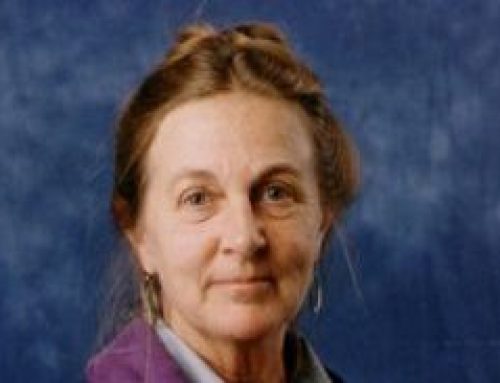Experiment and Experience: Complementary Approaches to Truth
David Lorimer, 1997
Introduction to The Spirit of Science and based on a lecture given at the 20th Mystics and Scientists conference, April 1997
The words experiment and experience both derive from the Latin root ‘experiens’, meaning to try thoroughly. It is significant that the verb to experiment is now intransitive: one must experiment on something, thus distancing oneself from it, whereas the word ‘experience’ is direct; one experiences something at first hand. The suffix ‘periri’ is related to the word peril, or trial to be passed through at some personal risk. Both experiment and experience may be dangerous. It is common to speak about the ‘pursuit’ of truth, a Promethean or Faustian striving that suggests something to be grasped and held. The etymology of the words ‘comprehend’ and ‘concept’ reinforces this idea, as they are both derived from ‘con’ meaning with, plus ‘prehendere’ or ‘capere’ meaning to grasp. An alternative set of metaphors proposes that truth is seen rather than grasped: the origin of the word ‘theory’ goes back to the Greek word for contemplation ‘theoria’, from which the word theatre is also derived.
Then what is the purpose of apprehending truth? It is to accumulate information, gain knowledge, acquire wisdom or a combination of all three? I would contend that we are all seeking insight and understanding, which is surely one reason why we attend conferences like this one! At the deepest level, I believe that truth has a transpersonal or impersonal aspect that recognised by means of an inner intuitive faculty; hence Browning’s suggestion in his poem Paracelsus that truth arises from within ourselves. Indeed, perhaps understanding itself is always intuitive although it may have a rational structure or justification.
If we now ask what an explanation is, we may find ourselves having to explain the explanation and consider the nature and level of causality involved. An explanation is unfolding of the implicit, a restatement of the issue in terms of assumptions regarded as ultimate. So explanations lead us back to assumptions that also dictate how satisfactory an explanation is perceived to be. For instance, current science tends to favour reductionist and evolutionary types of explanation. The next question is what counts as evidence? It may derive from experiment or perhaps from experience, which in turn will determine your method of validation. It is worth recalling Heisenberg’s remark that experiments are a mode of questioning and the quotation from Niels Bohr – ‘It is wrong to think that the task of physics is to find out how nature is. Physics concerns what we can say about nature.’ What we say about nature, then, depends on our assumptions, intellectual framework, world-view and level of analysis.
If one accepts Aldous Huxley’s contention of knowledge as a function of being, then one has to ask about one’s level of knowing. St. Bonaventure suggested that we have three eyes, the eye of sense, the eye of reason and the eye of contemplation. These could be called the outer, logical and inner eyes, or, in Plotinus’ terms nous (intellect), dianoia (reason) and sense. He distinguishes between the first two by saying that ‘Nous beholds things in their true relations beyond the separating and recombining function of discursive reason’. Reason gives us an analysis of the parts while intellect brings an insight into the whole. Natural science restricts its scope to the eyes of sense and reason. If a mystic is being tested in the laboratory, the instruments can only record changes in EEG patterns. The experiment cannot validate the inner nature of the subjective experience. In this spirit, Radhakrishnan wrote that ‘a physicist who rejects the testimony of saints and mystics is no better than a tone-deaf man deriding the power of music’.
In mystical insight the self or knower is not separate from objects of knowledge. As Seyyed Hossein Nasr asserts: ‘knowledge has become separated from being and the bliss or ecstasy which characterises the union of knowledge and being’. In Indian philosophy this is expressed as the union of Sat-Chit-Ananda, or being, consciousness, bliss. The process of the externalisation of knowledge or the vision of duality ‘blinded him to the primordial knowledge which lies at the heart of his intelligence’. Nasr further comments that the Divine source of knowledge is also source of being and love: hence their union in supreme knowledge. As he puts it:
‘The very essence of things is God’s knowledge of them and that there is a reciprocity and, finally, identity between knowing and being’. Or Plotinus: ‘it is not the eye which sees, but the active power of the soul. It is this power that is the root of understanding. Or Novalis: ‘How do we see physically? No differently than we do in our consciousness – by means of the active power of imagination. Consciousness is the eye and ear, the sense for inner and outer meaning. We reach the heart of the paradox of knowing when we realise the non-duality of knowing like Eckhart:
‘The eye with which I see God is the same eye as God sees in me’. And Ruysbroeck: ‘By means of this inborn light they are transfigured, and made one with that same light through which they see and which they see’. If we ask at this point what is real? Then Plotinus would respond: ‘We are within a reality that is also within us’. Immanence and transcendence are united in this level of knowing. Renée Weber observed a decade ago that ‘a parallel principle drives both science and mysticism – the assumption that unity lies at the heart of our world and that it can be discovered and experienced by man’. The universe is one, it is our perception that fragments it and alienates us from our intrinsic sense of belonging.
The Spirit of Science – Experiment, the ‘Horizontal’
Many great creative scientists express aesthetic or mystical insights in connection with scientific knowledge. Einstein maintained that ‘the cosmic religious feeling is the strongest and noblest motive for scientific research’. While the French mathematician Henri Poincaré wrote that ‘the scientist does not study nature because it is useful; he studies it because he delights in it, and he delights in it because it is beautiful. If nature were not beautiful, it would not be worth knowing, and if nature were not worth knowing, life would not be worth living’. This is much more than dry statistical analysis! The poet Wordsworth wrote that ‘poetry is the breath and spirit of all finer knowledge; it is the impassioned expression which is the countenance of all science’.
I would like to propose that a similar spirit inspires the search for truth in both science and spirituality:
- Exploration expressed in wonder and curiosity.
- Creativity and imagination – bringing forth new models and discoveries
- Critical and analytical rigour – applied to methods and procedures
Practice – through experimental prediction and testing
Openness and awareness of metaphysical assumptions
Science has been at its strongest in the first four areas, but awareness in the fifth domain of assumptions has often been lacking. Some great scientists, however, have been acutely aware of their importance, for instance Prince Louis de Broglie: ‘History shows that the advances of science have always been frustrated by the tyrannical influences of certain preconceived notions that were turned into unassailable dogmas. For that reason alone, every scientist should periodically make a profound re-examination of his basic principles’. The fact that no philosophy or sociology of science is taught to the majority of science students does not encourage the kind of re-examination recommended by de Broglie, but the emerging science of consciousness may demand it. The co-originator of the theory of evolution, Alfred Russell Wallace warned that ‘whenever scientific men of any age have denied the facts of investigators in a priori grounds, they have always been wrong’. Wallace himself was interested in psychical research and spiritualism, much to the dismay of his scientific contemporaries, but he knew that their prejudice was based on ignorance of the field.
Nearly a hundred years ago William James warned of the dangers of scientism, the conviction that only material world is real and only physical causation is scientifically respectable: ‘Science taken in its essence should stand only for a method and not for any special beliefs, yet as habitually taken by its votaries, Science has come to be identified with a certain fixed general belief, the belief that the deeper order of nature is mechanical exclusively, and that non-mechanical categories are irrational ways of conceiving and explaining even such a thing as human life’. At this point we should remind ourselves of the roots of the word science itself in the Latin scientia, meaning knowledge. We have seen that physical science (physics was originally called natural philosophy) is limited to the eyes of sense and reason. It therefore exceeds itself if it declares that what cannot be measured does not exist.
In his recent work Ken Wilber has proposed four quadrants of knowledge, all of which are necessary to give a complete account of reality. By distinguishing between individual and collective, interior and exterior, he arrives at these four categories of interior-individual (intentional), interior-collective (cultural), exterior-individual (behavioural) and exterior-collective (social). Science has concentrated mainly on the external or outside in perspectives and has tended to see the interior or subjective aspects of existence as secondary. The following chart amplifies this point. If one takes the direction of causality from the left to the right column, one would then conclude that the elements of the second column derive from those in the first. An alternative model, however, would propose that the factors are complementary rather than primary and secondary.
CAUSALITY AND EXPLANATION
Direction from left to right: reductionism; or complementary if equal
Primary Secondary
External/visible Internal/invisible
Surface Depth (shared)
Observation Interpretation
Quantity Quality
Objective Subjective
3rd person (it) 1st person (I)
Matter-energy Spirit-mind
Body/brain Consciousness
These categories might in turn be expressed as:
Experiment Experience
Science Spirituality
In his book Eye to Eye, Wilber maintains that there are various valid modes of knowing, depending on the eye in question – sense, reason, contemplation. Each mode has its own injunction, mode of apprehension and method of confirmation. The injunction states: if you want to know this, do this. The procedure brings forth a particular data domain that may be an experiment or an experience. Apprehension comes in terms of a particular experience, realisation or piece of evidence. Confirmation concerns testing and falsifiability, discrimination or interpretation and can equally be applied to different domains.
The Science of the Spirit – Scientia Sacra, the ‘Vertical’
Any new science of consciousness or of the spirit requires what Wilber calls an integral approach using all four quadrants and noting their correlations. One of the differences between modern scientific as compared with inner spiritual research is that the researcher is trained but rarely transformed by the process of research. In a recent article for the Journal of Consciousness Studies, he notes that you can understand the writings of Daniel Dennett with an unreconstructed consciousness, but the same cannot be said for an understanding of Plotinus. Without an inner transformation you will think that Plotinus is ‘seeing things’ – ‘and he is, and so could you and I if we both transform our perception and understanding’. Thus a profound science of consciousness or of the spirit requires an interior transformation of the researcher. Science itself can become a spiritual path to the extent that there is a change of vision and hence of the organs of perception. Objective perception can be achieved in both science and spirituality and, according to Ravi Ravindra, consists in ‘freedom from oneself’
Ravindra has written perceptively about such issues. He maintains that if being is divorced from knowing, it leads to a ‘fragmentation of our sensibilities’. He adds that ‘to the extent that philosophy and theology become scientific, God is reduced to a mental construct. Theology thus becomes a rational profession dealing with metaphysical systems, rather than a psycho-spiritual path for the transformation of the being of man’. The mystic is necessarily transformed on the living spiritual path, but the temptation for the philosopher or theologian is to resort to abstractions, taking refuge in words and systems.
We can now apply the same scheme to the search for inner truth:
- Exploration – the mystery of inner space.
- Creativity and imagination – visionary insight and inspiration.
- Critical or analytical rigour – precision and consistency in the use of terms, the development of discrimination.
- Practice – commitment, discipline, meditation, prayer
- Openness and awareness of metaphysical/theological/cultural assumptions. Tolerance is vital here.
Integration and the Search for Unity
The world picture of Plotinus sees the universe as a living chain of being, an unbroken series of ascending or descending (systole/diastole, in and outbreath) values and existences. The lower grades are less perfect and less real. There is an outward flow of creative energy that is balanced by a current that carries all back towards the source of being. This is the source of spiritual, intellectual, moral and aesthetic aspiration. In Sex, Ecology, Spirituality Wilber makes the case that Plato united both the processes of descent and ascent, rather than being an otherworldly dualist. He recognised that the ground and goal of being are one and the same, that the world was the field of both descent into strife and ascent towards love. Wilber shows how Schelling arrived at the same conclusion and thus overcomes the dualism of spirit and matter. Schelling saw mind and nature as differentiated but also that the transcendental and unifying ground of both had been forgotten. He contended that Spirit is the very process of the One expressing itself through the many: mind and nature or matter are both grounded in Spirit. Thus Spirit the only reality, beyond mind and nature: Spirit descends into manifestation, but this manifestation is nevertheless Spirit itself, a form or expression of Spirit itself. The importance of this insight is incalculable in the search to overcome the unreconciled dualistic categories of modern thought.
As Wilber concludes: ‘Spirit knows itself objectively as nature; knows itself subjectively as mind; and knows itself absolutely as Spirit – the Source, the Summit, and the Eros of the entire sequence’. He sees the process as a passage from subconsciousness through self-consciousness to non-dual superconscious; or from the pre-personal through the personal to the transpersonal; or again from the biosphere through the noosphere to the theosphere.
I believe that it is possible for science, and especially the science of consciousness to deepen into what Nasr calls scientia sacra. Here the mind is not divorced from the heart: ‘the eye of the heart perceives the unity that is at once the origin and end of the multiplicity perceived by the mind and the mind’s own power to analyse and know discursively. The light with which the mind is seeking to discover is itself a ray of the Light of God’. We return to that earlier remark by Eckhart: ‘The eye with which I see God is the same eye as God sees in me’. And Augustine: ‘our whole business of life is to restore the health of the eye of the heart whereby God may be seen’. The eye of the heart is precisely the eye of contemplation that can be opened. Our journey takes us from understanding to wisdom, from theoria to realised gnosis: ‘the realisation of a knowledge which being itself sacred, demands of a man all that he is. That is why it is not possible to attain this knowledge in any way except by being consumed by it’. Or as Rumi put it: ‘the result of my life can be summarised in three words – I was immature, I matured and I was consumed’.
Cortona, Italy, September, 1997.


